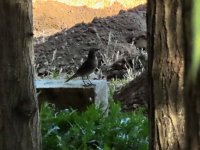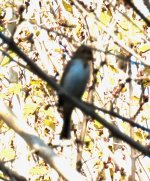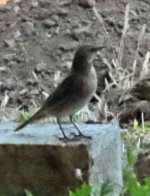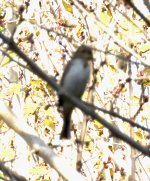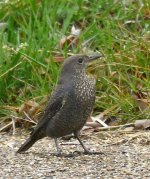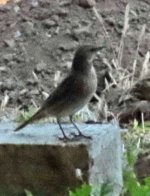Owen Krout
Well-known member

The day was very slow until, of course, I was pressed for time and had to leave. Then a complex song attracted me. It appeared that several of these pale gray looking birds, thrush like in appearance and behavior, were the source, but whatever it was was being very reclusive. I managed to sneak up on this one but the lighting was terrible.
Secondly, just because it is nagging at the edge of my mind and seems like an identifiable coloration, a Blobsquach photo that I just got a quick look at while stalking the thrush and managed just one quick shot so deep in the shadows that the SX-70 refused to lock on. Impressed me as size, shape and posture pointing towards flycatcher, but seems quite late for any of them.
If either seems to be worth a second try, I might be able to go back tomorrow with the best camera gear and spend some time trying to tie them down.
As always, thanks for any help or even guesses.
Secondly, just because it is nagging at the edge of my mind and seems like an identifiable coloration, a Blobsquach photo that I just got a quick look at while stalking the thrush and managed just one quick shot so deep in the shadows that the SX-70 refused to lock on. Impressed me as size, shape and posture pointing towards flycatcher, but seems quite late for any of them.
If either seems to be worth a second try, I might be able to go back tomorrow with the best camera gear and spend some time trying to tie them down.
As always, thanks for any help or even guesses.




